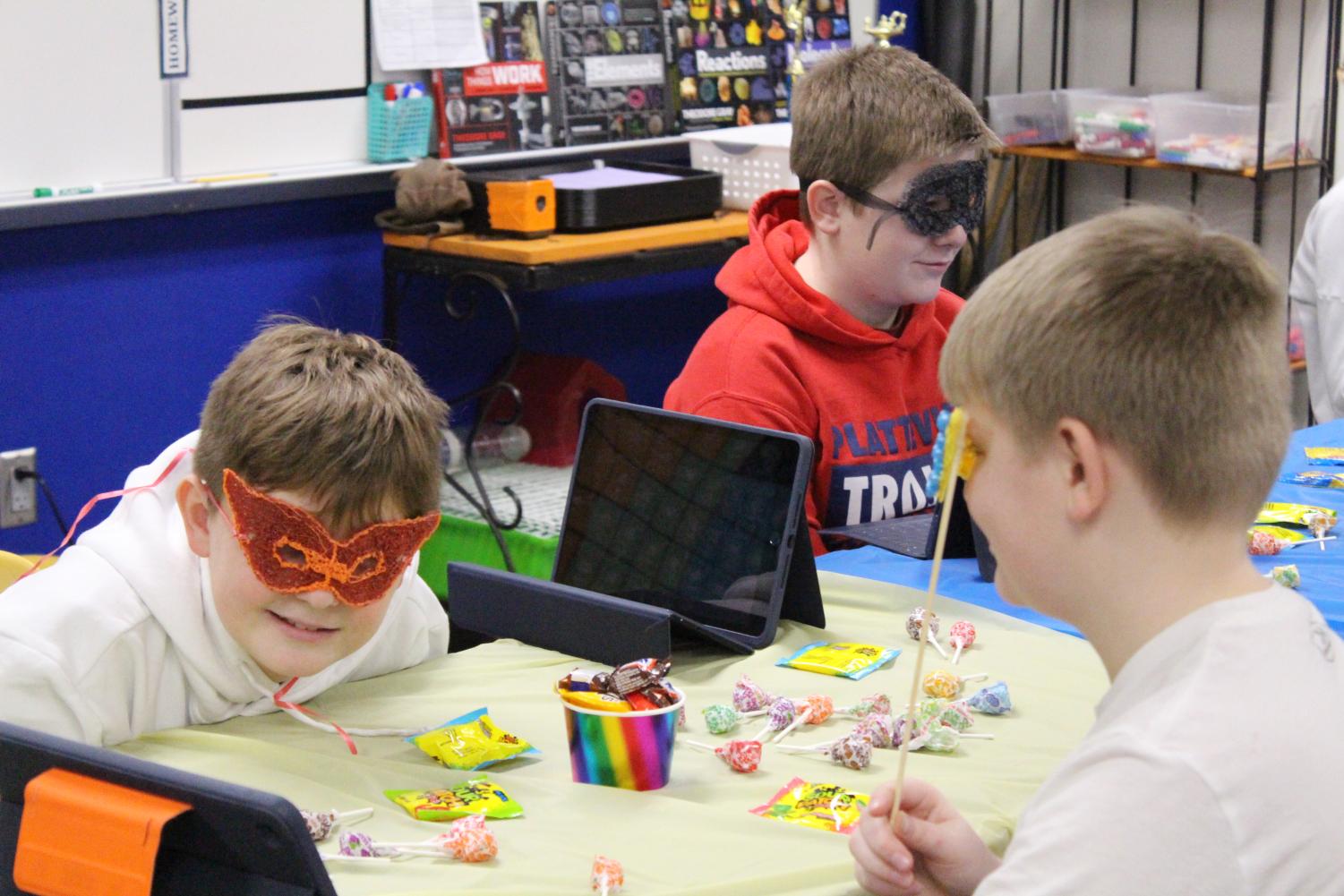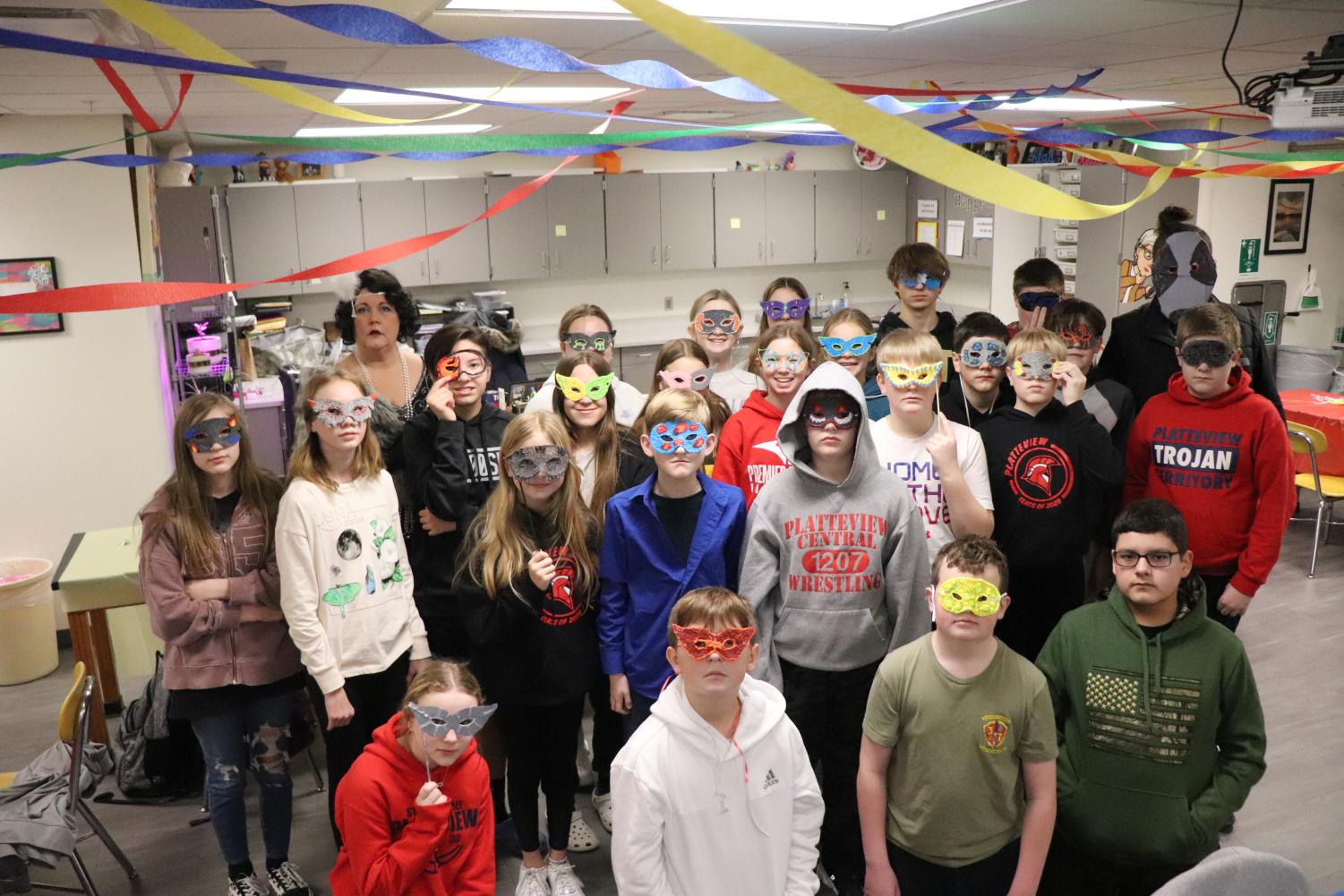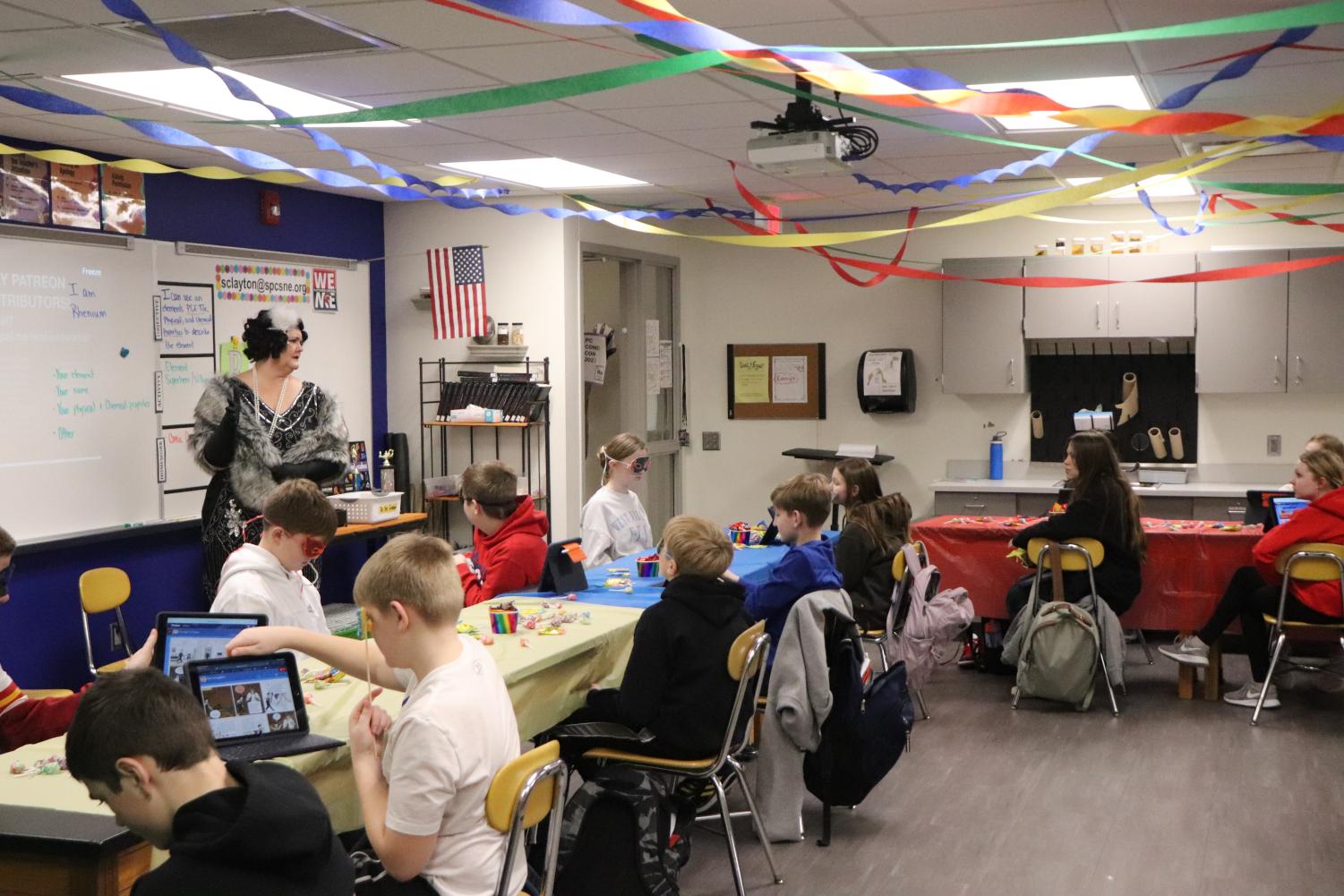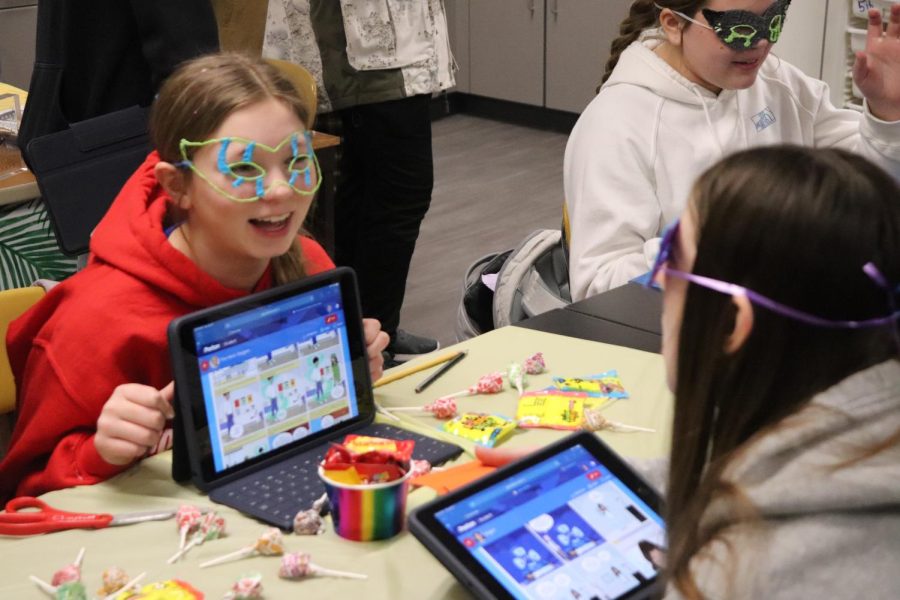PC Science Leads to Comic-Con Craze
February 3, 2023
Tuesday, January 31st, the Platteview Central Science Department started a new tradition for their annual science fair turned comic-con. Each student in class was assigned an element on the periodic table, and they personified that element into a superhero or villain. Students explored their elements by writing digital comic books in the style of superheroes. As candy covered the tables and students wore superhero masks, students shared their comics and their newly found information about the elements of the periodic table.

PC Science teacher Mrs. Clayton explained, “As an introduction to Physical Science, students learn about atoms and the periodic table, then choose one element to research. They identified the physical and chemical properties of the element, as well as other interesting facts. As a summative, students used personification to create element superheroes or villains and told how their character received superpowers in a comic strip. Students also used 3D pens to create masks that related to a physical or chemical property of the element.”.

The students let their creativity take the reigns with their elaborate character backgrounds and costuming. Seventh grader, Harper, was the element Gallium and turned it into a superhero who can melt and conduct electricity. She spoke about her hero’s capabilities saying, “When it freezes, it can fit into any mold and it can turn to metal.”
Another student, Joshua, wore a trench coat and a modified gray wig to look like the crazy scientist, villain he turned into his element.
Students also brought creativity to their superhero masks. Masks that were transparent represented elements that took on the form of gasses. Some masks even had red flames on them, indicating that they were flammable.

Mrs. Clayton herself also participates in the event alongside her students. Having their teacher participate alongside them makes it less intimidating for the students. Mrs. Clayton spoke about her character this year saying, “My character is Rhenium (element #75). She was isolated by German physicists in 1925, so I dress like a flapper! I chose the colors and my character traits based on the element’s properties. For example, rhenium is toxic and can cause rashes or burns if it gets on human skin, so she’s obviously a villain. To be honest, I love dressing up every year. This project is fun for all of us.”

Mrs. Clayton explained how the periodic table comic-con helps her students academically, creatively, and with confidence. She explained, “Research shows that if teachers use hands-on learning and engaging activities, students are more likely to use higher-level thinking skills as they learn. I could have very easily had them research their element and write a report, but that’s not as fun. And it was challenging for them to come up with superpowers for an element that conducts electricity, has a high melting point, or is a gas. But once they got the hang of it, their creativity really came through. One of the coolest things I saw was how the students were helping each other, giving each other ideas for their characters, comics or masks.”

The PC Comic-Con is helping students engage in hands-on learning and work together to come up with ideas and problem solve. From this event more kids can spark interest in STEM careers and engage the joy of science in the world.
